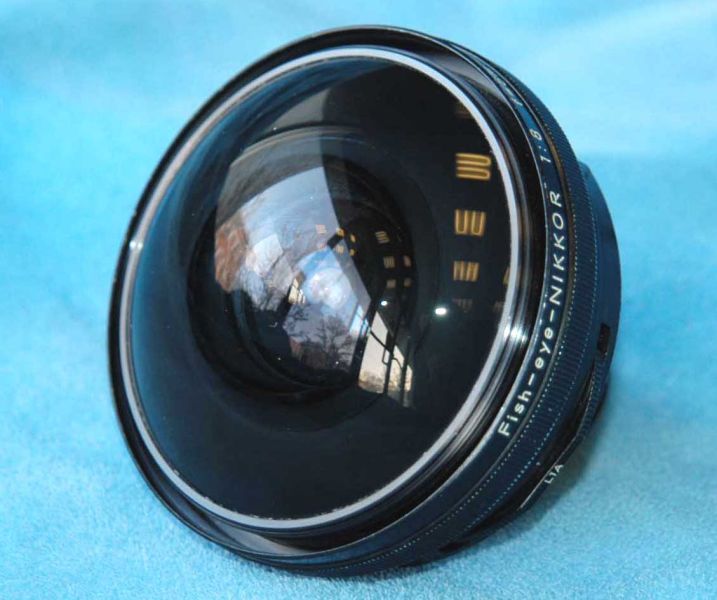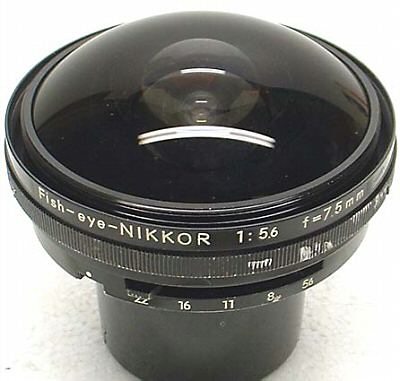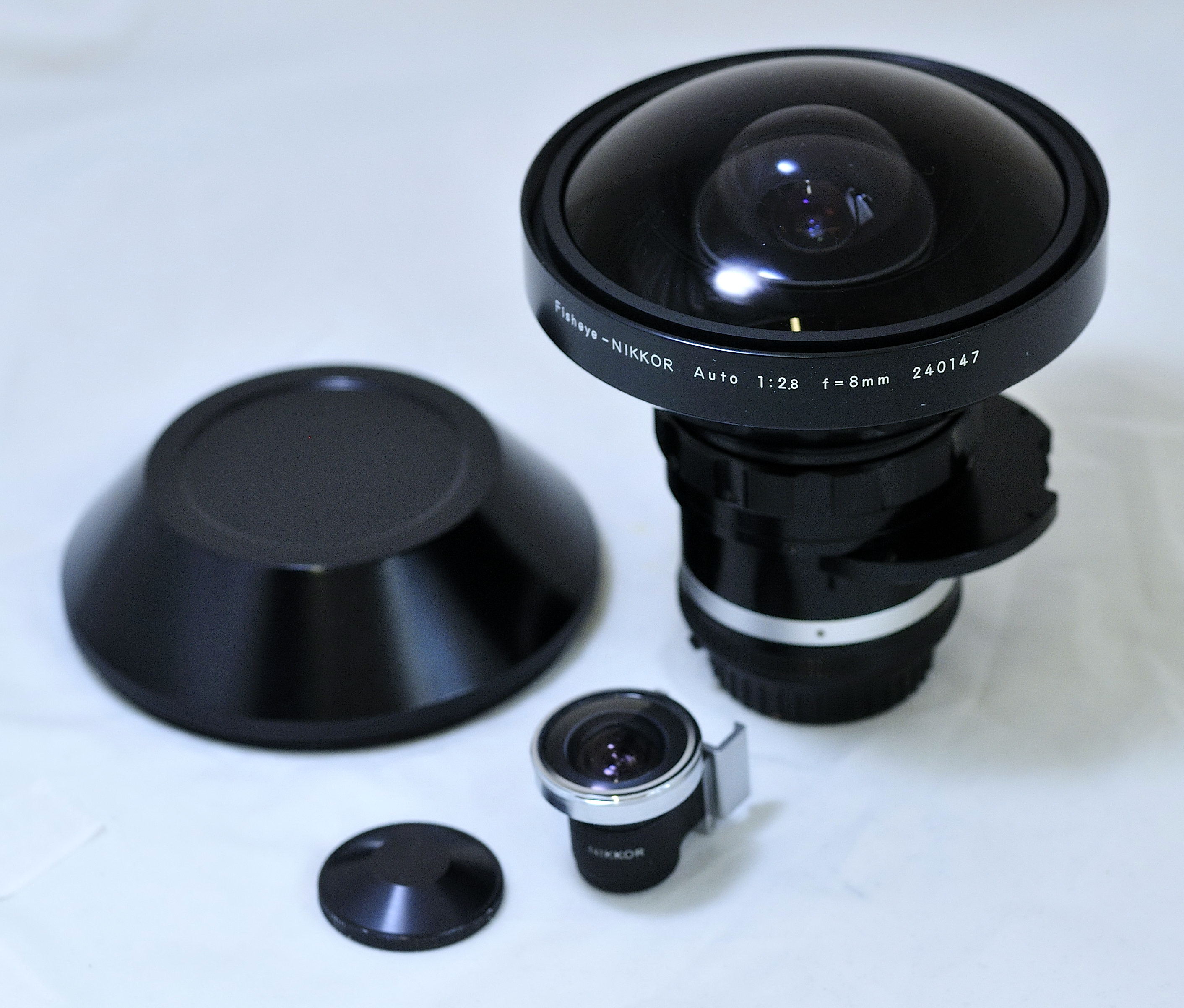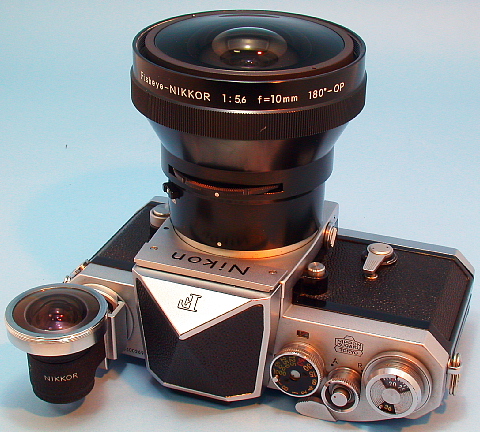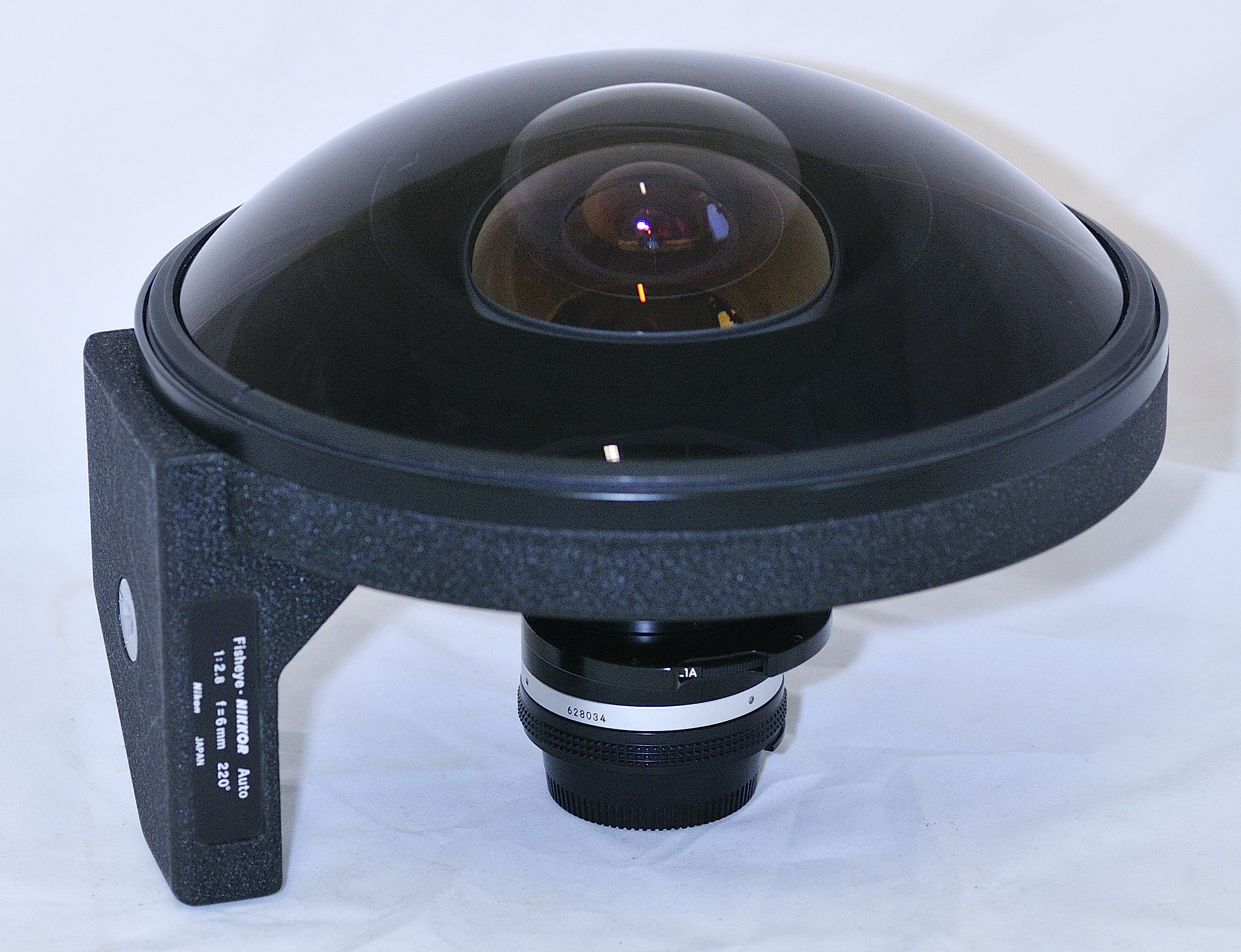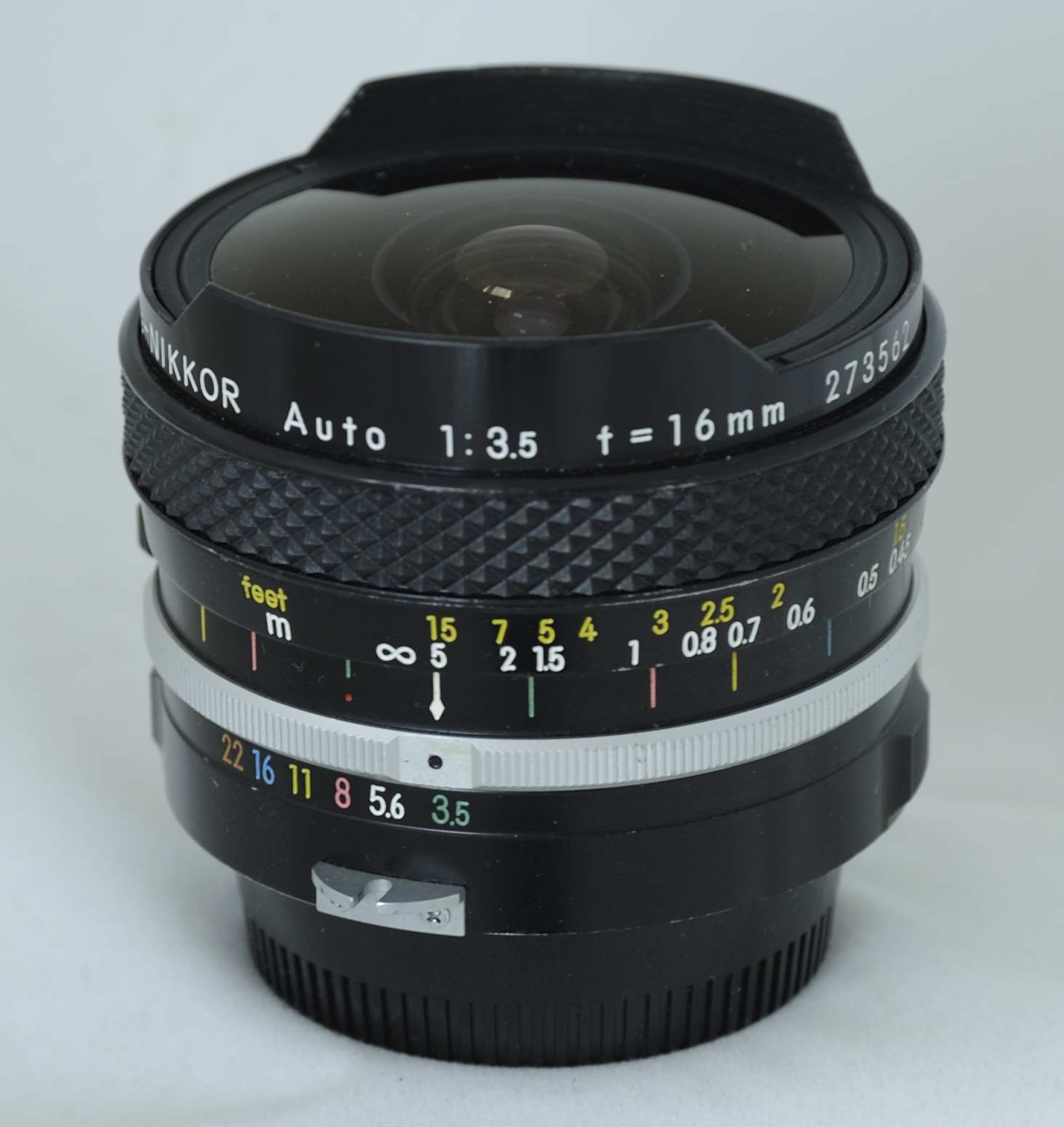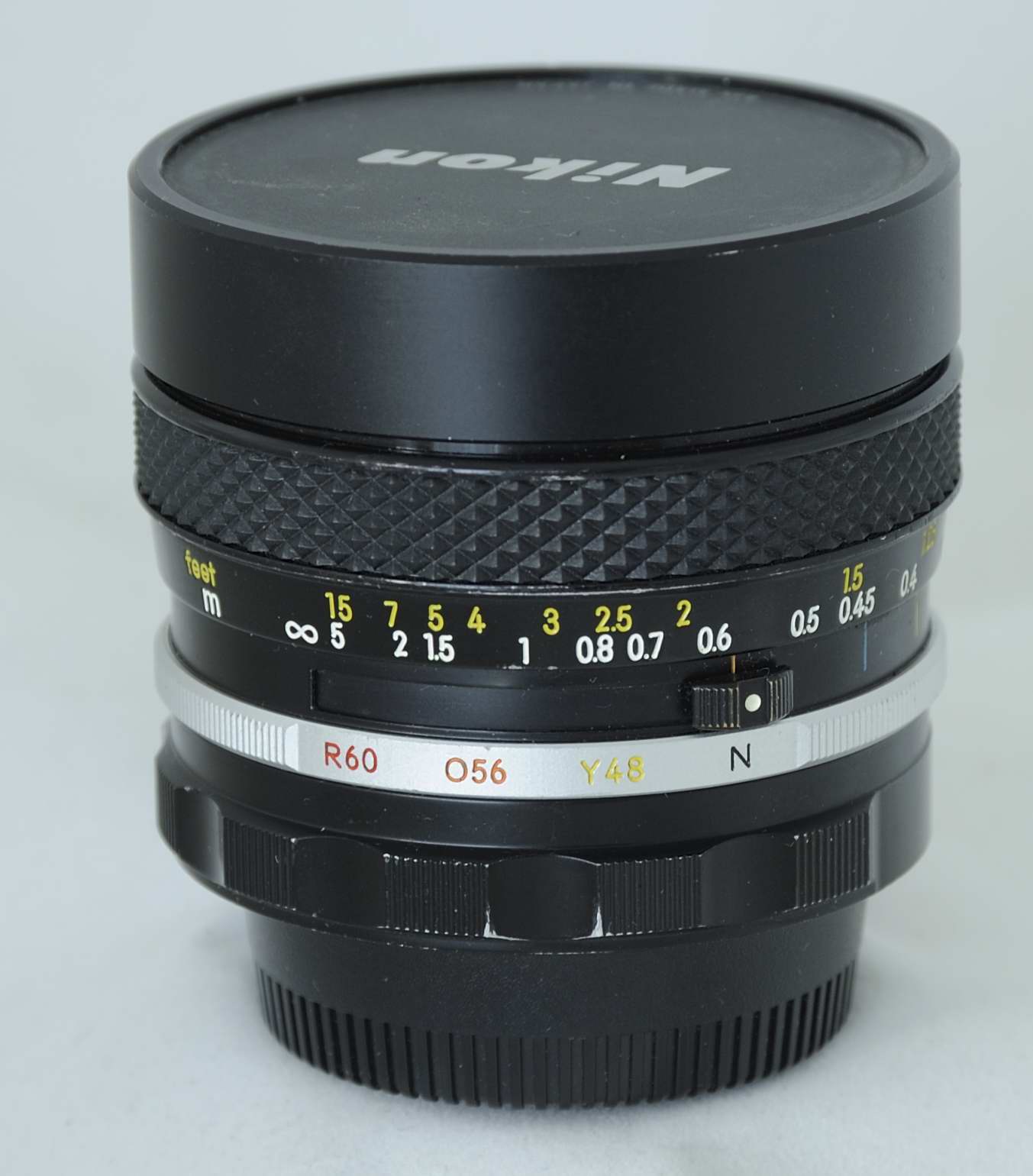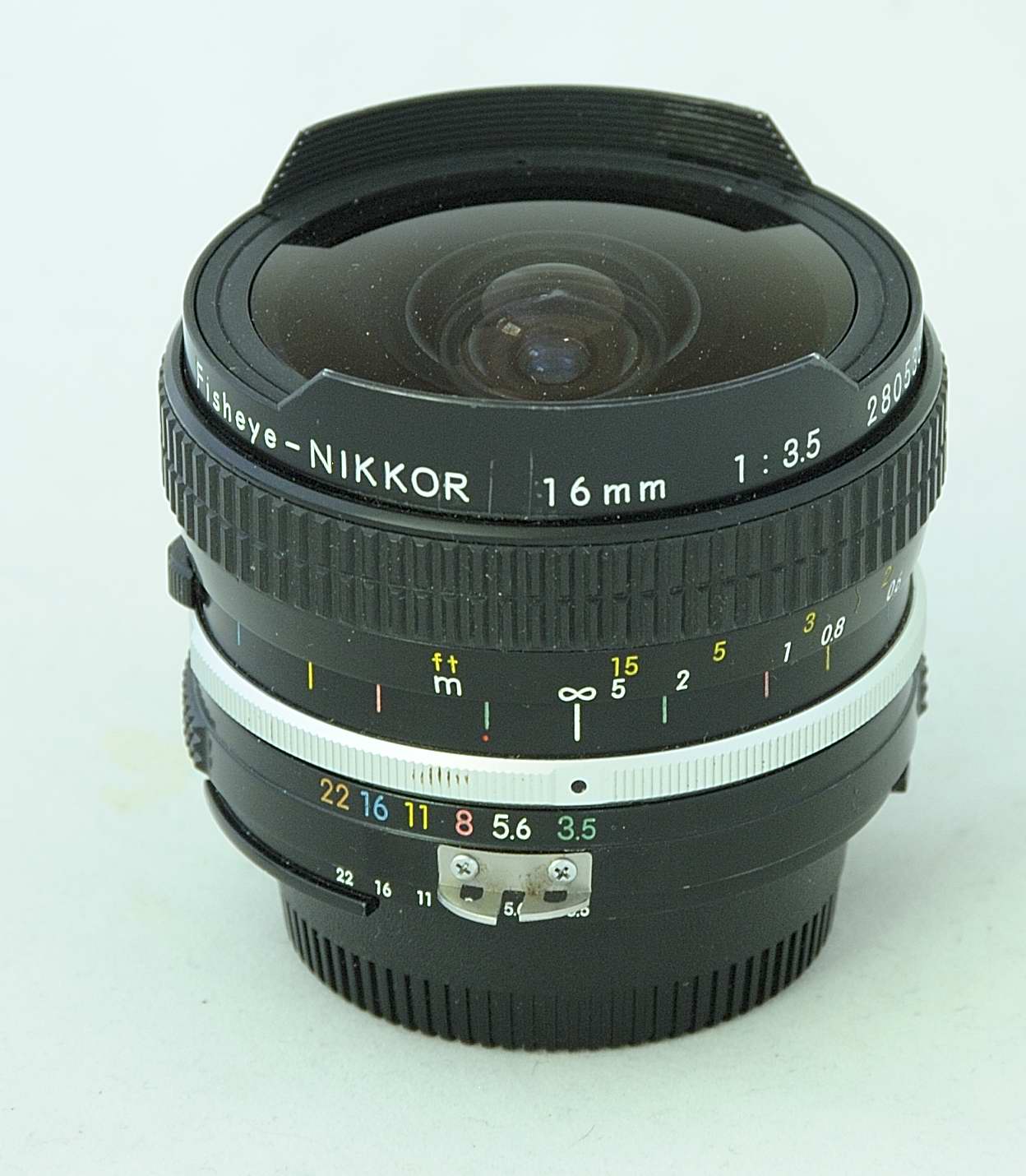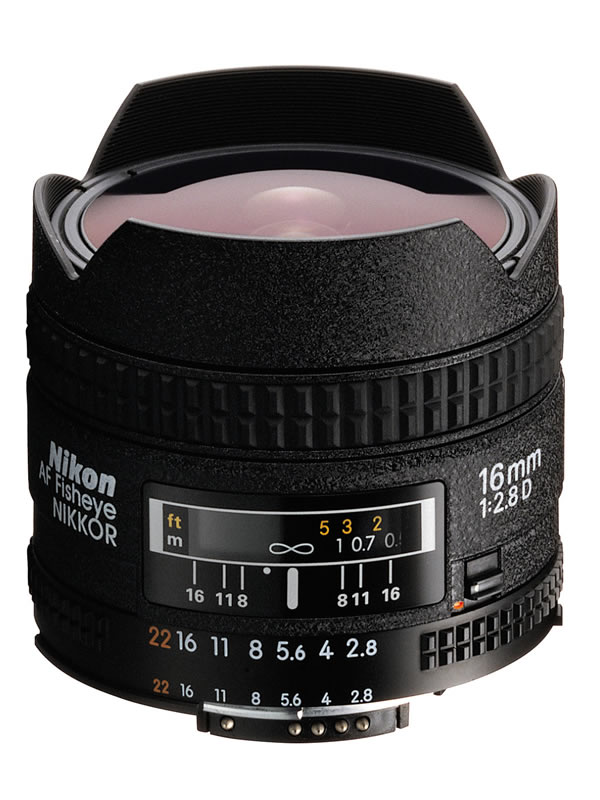Nikkor fish-eye lensesIntroduction The first time the term ´fish-eye´ was introduced was in ´Physical Optics´, a book published in 1911 by the American professor in experimental physics, Robert W. Wood (1868-1955). In this book (p. 67) he describes the breaking of light beams on the surface of a lake. He also constructed a ´hole-camera´ (his first fish-eye camera), filled with water, through which he could see the world with an angle of 180 degrees. Willy Nerté, head of the calculation team of Carl Zeiss, Jena (Germany) writes in ´Photographic Lenses´, published in 1932 that the first real fish-eye lens was constructed by Robin Hill in 1926. Other scientists, however, are claiming that this so called Hill Sky Lens was produced by the famous optical industry R&J Beck Ltd. in London (UK). It may remain a moot point but what is clear is that this type of lens is rather young. Nowadays a fish-eye is described as a lens with at least a diagonal viewing angle of 180 degrees or more. The term fish-eye comes from the eyes of fish, although not all fish do have a free sight with an angle of 180 degrees. Nikon Corporation is the first optical industry that produced a fish-eye lens for photography. In 1938 it produced a lens for meteorological research with an viewing angle of 180 degrees. Based on this lens a special fish-eye camera was introduced in July 1960; with a lens of 16mm. focal length and a maximum aperture of f/8. In 1962 followed by the world´s first fish-eye lens for a single lens reflex camera. In July 2003 the AF DX Fish-eye Nikkor 2.8-10.5 mm. G-ED was introduced. Let´s have a look what lenses Nikon has made through the years. For a matrix click here. Fish-eye Nikkor 8/16.3 mm. camera As mentioned before this camera was introduced in July 1960. The camera had a Seikosha SLV #0 shutter (B, 1-1/500th. sec.) and a built-in fish-eye lens 8/16.3mm. (5 lenses in 4 groups) with a diagonal viewing angle of 189 degrees. The lens was a fix-focus type with aperture settings of f/8, f/11 and f/16. The lens produced an circular image (50mm diameter) on a 120-roll film (6x6cm.). It is unclear how many cameras were build in a production period of nearly one year. Some cameras could be ordered with a motor drive with an interval time button, making it possible to make pictures at intervals of 5 - 180 minutes. The latter model is extremely rare. Fish-eye Nikkor 8/8mm.
In July 1962 this very first fish-eye lens for SLR cameras was introduced. This fix-focus lens has an aperture that can be closed from f/8 - f/22. It produces a circular image (24 mm. diameter) on a 35mm. film. This lens will only fit on Nikon SLR cameras that can lift the mirror, as the rear part of the lens protrude into the mirror house. Photomic viewfinders of the Nikon F and F2 cameras has to be removed to mount the lens. To be able to see something with the lens an additional viewfinder - with a viewing angle of 160 degrees - was supplied, to be mounted on the accessory shoe of the camera. This rare lens was produced until May 1966. Fish-eye Nikkor 5.6/7.5mm.
In July 1966 this lens - with a one stop faster aperture - was introduced. This lens is a fix-focus type as well. It produces also a circular image with a diameter of 23 mm. on a 35mm. film. It came with a separate viewfinder. Some 2000 lenses were made until February 1970.
Fish-eye Nikkor 2.8/8mm.
In August 1970 a very much improved fish-eye lens entered the market. It can be focused down to 30 cm. and the mirror of the camera doesn´t need to be lifted. The viewfinder of the camera may stay on, too. This lens - producing a circular image of 23 mm. in diameter - also has a filter turret. In June 1977 a AI-modified version was introduced, followed by the AIS-version in December 1982.
Fish-eye Nikkor 5.6/10mm. OP
In May 1968 this special lens - OP = orthographic projection - was introduced. This projection produces images of 21mm. in diameter with a enlarged center. There is virtually now light fall-off in the corners, due to use of a aspheric lens element. This fix-focus lens can be stopped down from f/5.6 - f/22. Until August 1976 just 780 lenses of this type were produced. Up to here lenses with a diagonal viewing angle of 180 degrees were presented. Nikon produced however two lenses with a staggering viewing angle of 220 degrees! With this lenses one can look back! Fish-eye Nikkor 5.6/6mm. Again as the world´s first lens with a viewing angle of 220 degrees this lens was introduced in January 1969. The mirror of the camera needs to be lifted, a Photomic viewfinder can stay on the camera. The separate viewfinder (Nikon DF-1) has a bit smaller viewing angle. Six filters can be loaded in a slot just in front of the lens mount. This lens produces image with a diameter of 21.6mm. Production was stopped in March 1978 after some 4000 lenses. Fish-eye Nikkor 2.8/6mm.
This second lens with a viewing angle of 220 degrees has an unbelievable maximum aperture of f/2.8 !! As heavy as more than 5 kilo this lens was introduced in June 1972. It can be focused down to 30 cm., an aperture range of f/2.8 - f/22 and it produces an image with a diameter of 23 mm. In 1977 an AI-version was introduced, followed by an AIS-version in 1982. It is unknown how many lenses were produced; it can´t be many because of a price tag of more than 8000 Euro. Fish-eye 3.5/16mm.
This fish-eye lens, introduced in March 1973, is the first fish-eye lens that produces a full frame image on a 35mm.-film. It has a filter revolver, can be focused down to 30 cm. aperture settings down to f/22 and a viewing angle of 170 degrees ´only´.
In spring 1977 an AI-version was introduced.
Fish-eye Nikkor 2.8/16mm. At the 1978 Photokina Camera Fair in Germany this lens was shown to the public. One year later (August 1979) it became available. This rather small lens (see image below) has a filter ring at the back, can be focused down to 30cm., an automatic aperture range of f/2.8 - f/22, and an AI-mount. In December 1981 an AIS-mount was fitted. . In August 1993 the first auto focus version (see below) with a D-coupling and full frame image was introduced. D = distance, which information is passed to the ´computer´ in the camera resulting in a more accurate light and flash measurement. If the lens is level even the corners are relatively without distortion.
. For info on more auto focus fisheye lenses see here. |
